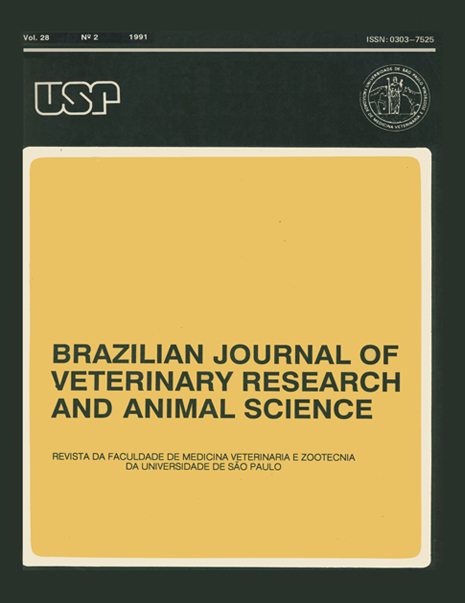Epidemiology of the Dermatobia hominis (L. Jr. 1781) (Diptera: Cuterebridae) infestation in bovine of São Carlos region, São Paulo State, Brazil
DOI:
https://doi.org/10.11606/issn.1678-4456.bjvras.1991.51936Keywords:
Myiases of cattle, Epidemiology, Dermatobia hominis, São Carlos, SP, BrazilAbstract
Nodules of the tropical warble-fly (Dermatobia hominis) in Canchim cattle breed ranging from24 to 36 months of age were counted in males and females, to study its epidemiology in the São Carlos region. The nodules of the warble-fly were counted in groups of 15 animals in the left side every 14 days. The counts started in January, 1982 and ended in December, 1983. The heaviest warble-fly infestations were observed in February, September, October and December which represent the frequencies of 14.5%, 17.5%, 17.5% and 9.7%, respectively. The lowest warble-fly infestations were observed in July and August with 1.2% and 0.9% respectively. During the months of January, March, April, May, June and November, the animals showed an intermediary warble fly count being of 5.8%, 4.5%, 7.5%, 7.4% and 7.7%, respectively. The highest frequencies of warble-fly nodules were observed during the warm and humid period, while the lowest frequencies were found during the cold and dry seasons.
Downloads
Downloads
Published
Issue
Section
License
The journal content is authorized under the Creative Commons BY-NC-SA license (summary of the license: https://





